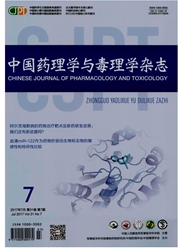

 中文摘要:
中文摘要:
量化构效关系( QSAR)是用来预测单一系列化合物结构和效应关系的方法,近年来逐渐应用于纳米材料毒性高通量筛选和预测。本文结合传统QSAR研究方法以及金属纳米材料结构和毒性特点,探讨目前金属纳米材料QSAR研究方法,主要针对仪器测量和量子化学等结构描述符获取方法,金属纳米材料毒理学实验数据质量评定标准,支持向量机、人工神经网络等模型构建方法,留一法、留多法等模型验证方法的研究进展及所面临的研究难点进行了综述,并对该领域的进一步研究进行了展望。
 英文摘要:
英文摘要:
Quantitative structure activity relationship ( QSAR ) study attempts to correlate chemical structure with activity using statistical approaches and is now being applied to high throughput toxicity screening and prediction of nanomaterials. This paper is interded to discuss the present QSAR study methods of nanomaterials based on traditional QSAR study, such as the use of measurement instrument and quantum chemistry methods of structure descriptor selection, evaluation criteria for the quality of published experimental data on nanomaterials, modeling methods such as K-nearest neighbor ( KNN) and support vector machine(SVM), validation methods such as leave-one-out(LOO) and leave-N-out ( LNO) . We also review the problems and challenges existing in this area and predict future development.
 同期刊论文项目
同期刊论文项目
 同项目期刊论文
同项目期刊论文
 MPA-capped CdTe quantum dots exposure causes neurotoxic effects in nematode Caenorhabditis elegans b
MPA-capped CdTe quantum dots exposure causes neurotoxic effects in nematode Caenorhabditis elegans b Threshold Dose of Three Types of Quantum Dots (QDs) Induces Oxidative Stress Triggers DNA Damage and
Threshold Dose of Three Types of Quantum Dots (QDs) Induces Oxidative Stress Triggers DNA Damage and A solid-state electrochemiluminescence sensing platform for detection of catechol based on novel lum
A solid-state electrochemiluminescence sensing platform for detection of catechol based on novel lum Surface modification of multiwall carbon nanotubes determines the pro-inflammatory outcome in macrop
Surface modification of multiwall carbon nanotubes determines the pro-inflammatory outcome in macrop 期刊信息
期刊信息
